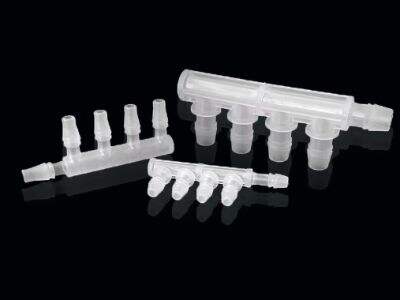Əgər bina və ya avtomobilə çatıqlar göndərən ərəkləri müşahidə edərsiniz, onların hamısı bağlı olmalıdır. Bu, iki ərək bir-birinə qoşulduğu yerdir. Yaxın ətilməli ərək: Changen Plastik PP mühafizə edicisi ugurlu sətirdir, ki, bu, törpüllü semen ərəklərini bir-birinə qoşur. Onlar sıvıları, gazyı və ya cəsarəti bir yerdən başqa bir yere köçürmək üçün ərəkləri işbirliyində saxlayır. Ərəklərdə ətilmələr olmasa - necə ərəklər bir-birinə bağlı olsardı və hər şey boşalardı! Çünki ərək ətilmələrinin çoxlu növləri var və hər birində müəyyən üstünlük və eksiklikləri var.
Ərək Ətilmələrinin Növləri
Ən ümumiləşmiş qoşma növü, əsasən, vurğuldanmış birləşmədir. Bu qoşma, vitdək kimi işləyir. Borun bir ucunu başqa borun ucuna vurğulayaraq daxil edirlər. Şəxsiyyətə görə sıx vurğuldanmış birləşmə yüksək basınğa dayanıqlıdır. Tərəfdən biri isə, əgər bağlı olsalar, onları bir-birinə yerləşdirmək və ya ayırmaq bir az çətin ola bilər. Onlar bu mənasında güclüdür, lakin bazen ilə mübarizə etmək olar ki, çox zəhərli ola bilər!
Flang birləşməsi başqa bir qoşma növüdür. Bu qoşma, borun hər iki yanından flang deyilən iki düz hissə istifadə edir. Borular flanqları bir-birinə vurucu ilə bağlayaraq sabitləşdirilir. Flanglı birləşmələr, çoxlu maddə və ya gazın idarəat sistemləri və ya tesislərədən keçməlidir. Bu birləşmələr çox stabillidir və güvəndlidir, lakin bunların da qiymətləndirilməsi maliyyəci tərəfindən qruplaşdırılmalıdır, bu da kiçik layihələr üçün ən yaxşı variant deyil ola bilər.
Sıxışma münasibəti, üzlərindən gələ biləcəyiniz başqa bir növdür. Bu növ, boruları birləşdirmək üçün fındığ və qab mekanizmından istifadə edir. Fındıq, qaba yaxşı şəkildə sıxılır və boruları birlikdə saxlayır. Bu quruluşun asanlıq etdirilən qurulumu onların çox sayda hallarda uyğun bir seçimdirlərini səbəb olur. Hətta birləşdirilən hissə də! Ehtiyacınız olsaydı, onu ayırmak da asandır. Amma bir problem var ki, sıxışma münasibətləri qatıqlı borular (kimi PVC) üçün uyğunsuzdur, çünki bu borular basıldığında qarışıbilərlər.
Potensial olaraq sahib olabileceyiniz başqa bir növ birləşmə isə slip birləşməsidir. Bu birləşmə, puzzl hissəsi kimi işləyir. Bir borunun açılışı digər borunun ucuna yerləşir. Bu da deməkdir ki, dəyişiklər PP filtri asandır və sadədir, bu da onları sürətli şəkildə işə salmağa ehtiyacınız olduğunda müthiş bir seçim edir. Bununla belə, slip birləşmələrinin tapa biləcəyiniz ən qalın birləşmə növləri arasında olmadığını xatırlayın. Ən yüksək güclərin öncəlik olmaması tələb olunan zamanlar üçün onlardan istifadə etmək istəyəcəksiniz.
Düzgün Birləşməni Seçmək
Üstünlüklərə asılı olaraq, doğru boru birləşməsi bir neçə əsas faktor üzərə seçilməlidir. Borulardan keçən nəvi nədir: sıvı; gaz; ciddi materiallar? Əgər borularda daxil və ya çıxarılan maddə yüksək basınca maraqlıdırsa, təhlükəsizliyin qarşısını almaq üçün flang birləşməsi ən yaxşı seçim ola bilər. Bu yüksək basınca birləşmələridir. Əgər birləşməni tez-tez ayıra bilərsinizsə, onda kompresiya birləşməsi ən yaxşı seçim ola bilər çünki o asanlıqla ayrıla bilər. Boruların istehsal edilməsi üçün istifadə olunan materiallar da uyğun birləşmə seçmək üçün əhəmiyyətli hesab olunur. Bəzi materiallar digərləri ilə daha yaxşı uyğundur.
Xülasə
Fərqli növələrindən boru birləşmələri var və hər biri müxtəlif məqsədlər üçün istifadə olunur kimi qısa şəkildə danışılır. Bu, silindirli birləşmə, flang birləşməsi, kompresiya birləşməsi və slip birləşməsidir. Onların hamısı gücləri və zəiflikləri var ki, bu onları fərqli hallar üçün ideal edir. Ən yaxşı birləşməni seçmək üçün... PP qabası , sualərəqəməsiz nəyin onlar vasitəsilə hərəkət etdiyini, bunun altındakı basınğını və çubuqlarının nədən hazırlanmış olduğunu düşünməlisiniz. Bütün bu şərtləri nəzərə alaraq, idarəetməli olduğunuz borusal ünitəyə uyğun düzgün bir əlaqə seçməlidir ki, bu effektiv və məsuliyyətli şəkildə işləsin. Boru əlaqələri — Hər bir boru ilə bağlı iş üçün daha yaxşı seçim edə bilərsiniz!

 EN
EN








































